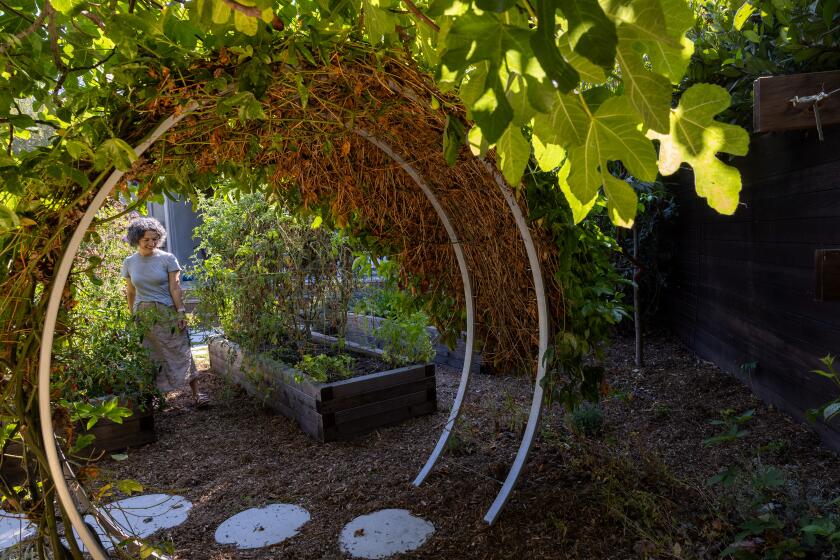For Color in Fall, ‘Mums’ the Word
Many people have forgotten that chrysanthemums are good garden plants. They are true perennials, in fact, that reliably flower in the fall and come back year after year.
They are so common at supermarkets and florist shops (common enough to have picked up the nickname of “mums”) that their garden value has been overlooked of late. But their value in the garden is great. The Sunset “Western Garden Book” goes so far as to call them “the most useful of all autumn-blooming perennials.”
There was a time when small cuttings in 2-inch pots were commonly available at nurseries in the spring. But these seem to have disappeared, along with the tail fins on cars.
Instead, we find mums in full flower, at any time of the year. Some are “garden mums”--plants that are naturally small-flowered and small of stature. They are used like other bedding plants, for temporary color. Others have larger flowers on plants that have been treated with chemicals to keep them short. These too are usually tossed after they finish flowering, though you can save them.
And, there are those fantastic flowers seen at florists, with petals that look like little spoons, or spiders, or with flowers that imitate anemones or dahlias. These are exhibition mums, bred for competition at flower shows.
All of these will grow in the garden as true perennials, if they are cut back after flowering, then nurtured through the next spring and summer. If you buy them in flower in any season other than autumn--when they are naturally inclined to flower--they may get confused for a while, but they will adjust and come back.
If you want to do it right, the time to plant is now, and you should start with small plants. One source is Sunnyslope Gardens, 8638 Huntington Drive, San Gabriel, Calif. 91775, (818) 287-4071.
Sunnyslope has been selling chrysanthemums for 57 years at their nursery or through the mail. They have every conceivable kind of mum. There are mums in almost every color except true blue, and in a great variety of sizes from very short to towering. There are flowers with petals that are thread-thin or massed into pompon shapes. Their free catalogue shows many of the different types.
Sunnyslope sells rooted cuttings. These little plants will grow to full-sized, even towering, mums by fall if planted in a good, rich soil that would suit any other perennial.
As soon as the plants are in the ground, pinch off the top of the stem to force it to make low branches. You may want to pinch off the tips of the resulting growth several more times during the season, to keep plants low and bushy (most florist plants have been pinched repeatedly).
As an experiment, Anna Benson of Brentwood did not pinch back the mums growing in one of her borders but just let them grow. “I was hoping they would look a little wild and more natural, but I was surprised at how tall they got. Still, I’m very happy with them,” she says.
We photographed them the day before Halloween, on Oct. 30, but they had already ben in bloom for several weeks. These varieties came from Sunnyslope Gardens.
Like roses, mums need regular watering and fertilizing (at least three times before they flower) and perhaps protection from aphids and mildew (some people use rose systemic insecticide-fertilizers).
They also need staking if they are any kind other than the small cushion mums, garden mums or “garden varieties.” Note that Benson’s are all tied to stakes.
She stakes them after they are about a foot tall and cuts them back, right to the ground, every year right after flowering. In the early spring, the plants can be dug up and divided. The old center of the plant gets tossed out, and only the newer stems at the edges are saved and replanted. This is the other way of starting mums, from your own, or someone else’s, divisions.
If you want to save potted mums from the house or mums received as gifts, you can follow a similar procedure: Cut the flowers off, leaving some green leaves on the stem. Take the plant out of the pot, and split it apart into separate plants. Then plant it in the garden. When new growth sprouts from the base, remove the old stub of a stem.






